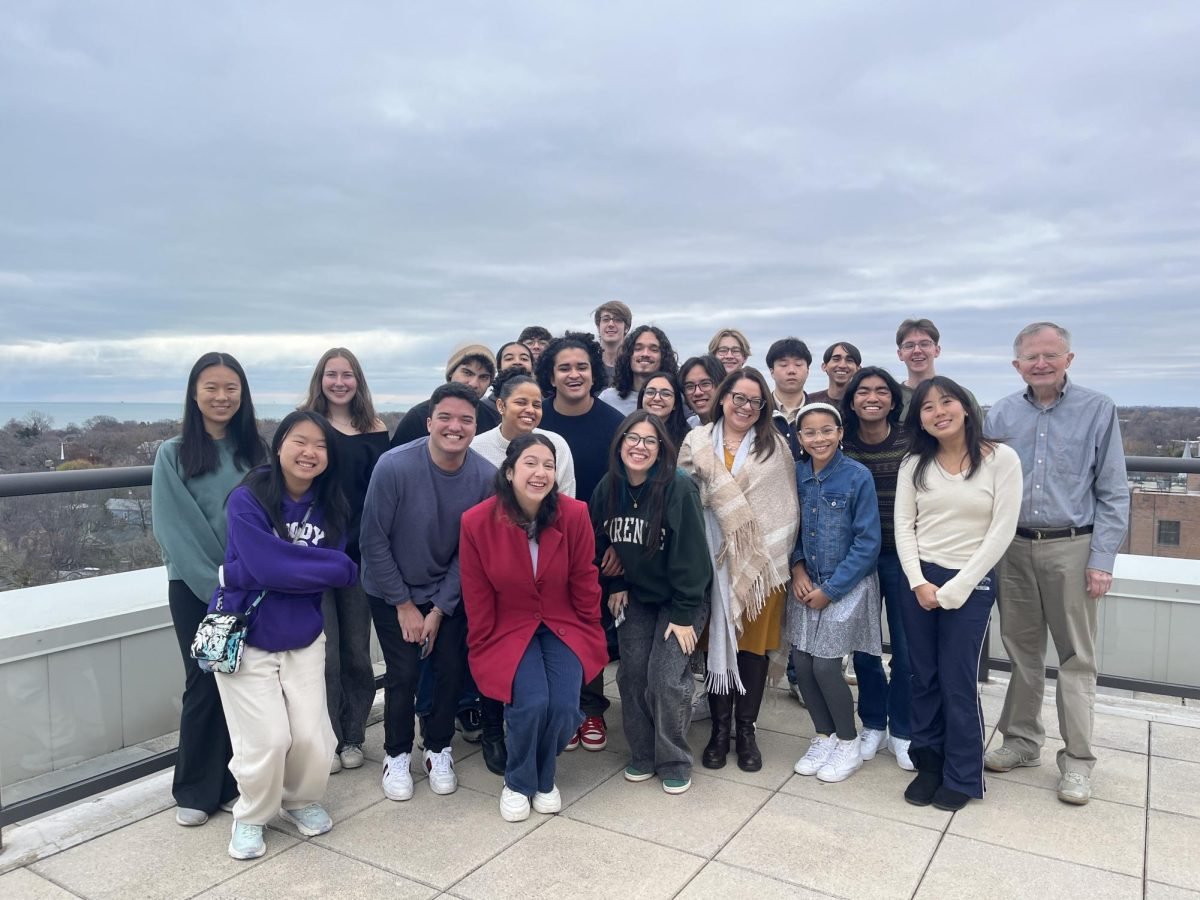A team of Northwestern engineering students received the highest honor at NASA’s 2024 annual Breakthrough, Innovative, and Game-Changing Idea Challenge forum on Nov. 12.
For its proposal “METALS: Metallic Expandable Technology for Artemis Lunar Structures,” the team took home the Artemis Award — an honor given to the group whose project demonstrates the greatest potential in contributing to the future of NASA’s Artemis moon missions.
The 23-person team, which comprised students across six Northwestern engineering departments, was led by McCormick junior Trevor Abbott and alumni Julián Rocher (McCormick ’24) and Ben Taalman (McCormick ’24).
After winning the Systems Engineering Award for the 2023 BIG Idea Challenge, Abbott said he and fellow founding members Rocher and Taalman were determined to clinch the highest honor in the next challenge.
“Initially, we came in with the mindset of ‘I don’t know how to do this’ and it stops there,” Abbott said. “But my big philosophy and my big push for everyone on the team was to take that mindset and transform it into ‘I don’t know how to do this thing, but I’m going to figure it out.’”
The theme of this year’s challenge was “Inflatable Systems for Lunar Operations,” which provided undergraduate and graduate student teams with up to $150,000 to design unique “inflatable technologies, structures and systems for lunar operations.” Abbott said the team’s journey started November 2023, when the group started brainstorming ideas for the 2024 challenge.
Abbott said the team decided to take an unorthodox approach to its system by designing an inflatable made entirely of metal, which, according to the NASA judge panel, was a “revolutionary idea.”
Rocher said the team’s primary goal was to develop an inflatable that would be capable of withstanding harsh lunar conditions in the long term.
“If you have this cryogenic storage tank that packs very flat and very dense inside a lunar lander and has a very large capacity, then all of a sudden it becomes feasible to store propellants for a variety of spacecraft,” Rocher said. “The innovation there is that with this technology, NASA will have the capability to deploy massive amounts of storage.”
After exploring various pitches, Taalman said he, Rocher, Abbott, and Liam Warlick (McCormick ‘24) decided that metal would provide the most longevity for their prototype to survive a moon landing.
The team’s decision to construct its inflatable out of metal set it apart from other groups, McCormick Prof. Ian McCue said.
“When the team came to us with the concept, (Ryan Truby) and I both looked at each other like ‘We know that this is going to work,’” McCue said. “This was something that was so out of the box, and we could kind of visualize how the material here could enable some new technologies for the moon.”
McCue said inflatables, like balloons, are typically made of polymers because of their elasticity, but the group chose to work with metal to circumvent the limitations of polymers associated with thermal cycling, radiation and regolith — conditions that the inflatable would theoretically undergo on the moon. Although the concept of inflating metal was unconventional, McCue added he had no doubts that the team would be successful in its endeavor.
However, the team’s project did not come without challenges, Taalman said. A week before their deadline to receive funding, Taalman said he and other members of the team pulled several all-nighters to finish crafting their proposal.
Once McCormick juniors Gavin Chung and Victoria Israel were promoted to team leads following the graduation of Taalman and Rocher, Chung said the team was operating on a four-week time crunch to finish its experiments. Chung added that the team constructed over 300 metal inflatables during its research.
Underlying these challenges was the novelty of the team’s research, Israel said.
“We were dealing with developing a technology that, even though we had sometimes seen before, we hadn’t really seen our technology before,” Israel said. “It wasn’t a structure that was known — it wasn’t a car, it wasn’t a house, it wasn’t a rocket — it was a completely new technology that we somehow had to build.”
As one of the youngest undergraduate teams competing among graduate and Ph.D. students, Abbott said the win was especially meaningful as a reflection of the team’s mindset, work ethic and passion for the project.
McCormick junior and lead engineer Serena Frolli said the experience was particularly rewarding for the members of the team who, like her, were balancing a multitude of academic and extracurricular activities during the project. Israel added that the team’s victory represents a powerful message about the potential of young people in engineering.
“It means that even the youngest engineers can change the world, or can change the moon,” Israel said. “To see how high and big of an impact we can have was amazing.”
Although NASA announced that it would no longer be hosting its annual BIG Idea Challenge, Abbott said many team members remain committed to their research on metallic expandable technology for Artemis lunar structures.
“We don’t quite know what the future holds, but we do believe that this technology will be part of lunar applications,” Abbott said. “If anyone’s going to develop it, it’s going to be us.”
Email: [email protected]
Related Stories:
— NUSTARS ready to soar in NASA Student Launch Competition
— CIERA hosts Chicago chapter of NASA International Space Apps Challenge 2023






